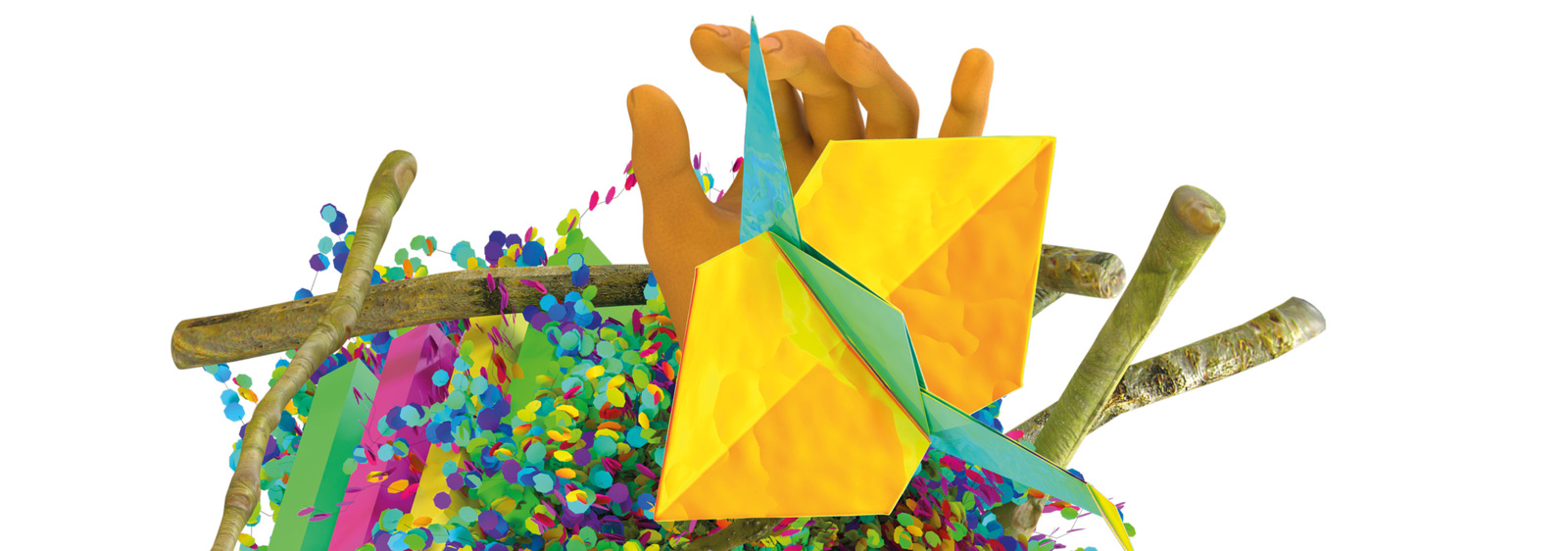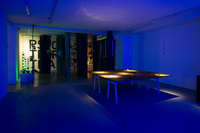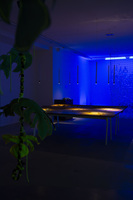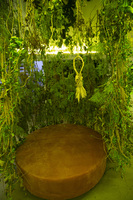Imagine an axis representing a relationship with nature, running from point zero to intimate proximity. Where would your place be? How close to nature are you?
Have you ever lit a fire with a flint in the rain to inhale the scent of natural incense, woven from wild herbs? Or stuck up to your ankles in wet clay, climbing a heap to write the muddy marks of your own journey on fabric? Or rolling blocks of ice through the park until they melt all over? Or pretending to be a tree in the forest to try to understand it? Have you ever tried sticking flower seeds between paving stones while walking through the city? Imagine an axis representing a relationship with nature, running from point zero to intimate proximity. Where would your place be? How close to nature are you?
When Agnes Denes, an American visual artist of Hungarian origin and pioneer of environmental art, abandoned painting to create installations in space in 1968, she summed it up as follows: ‘I left my studio and entered a world of worry’. From then on, her work served to foster environmental awareness, and her huge social sculptures, such as 11,000 People, 11,000 Trees, 400 Years, lived their own lives long after her artistic intervention. For Agnes Denes, her first act of reunion with nature was to live for eight days on a dangerous patch of land on the edge of Niagara Falls - closer than safety rules and common sense would dictate - to draw attention to civilisation's distancing from nature.
Today we are even closer to climate catastrophe. At the same time, living in urban agglomerations desensitises us and fuels alienation from the natural environment. This can result in a phenomenon known as ‘nature deficit syndrome’. Contact with nature is a prerequisite for human well-being. It allows deep relaxation, enhances intellectual potential, creativity and reduces the risk of diseases of civilisation.
This is why, in preparation for the exhibition, the artists, together with young people from Silesian schools, went outdoors to seek respite and inspiration. During the field workshops as part of the project ‘Heaven in Papillote. Art as the fifth element', we were reminded of the importance of contact with nature. The result of these experimental encounters are four installations in the exhibition space, relating to the elements of water, earth, air and fire.
Immerse yourself with us in the gallery jungle, take a sound shower, leave your earthy footprint until you reach the volcano itself.
- Exhibition
- Education
- 23 November 2024 ‒ 24 January 2025
- opening: 23.11. (Saturday) from 7:00 pm to 9:30 pm
- artists: Dobrawa Borkała, Michalina W. Klasik, Dominika Łabądź, Paweł Szeibel, Joanna Zdzienicka-Obałek
- curator: Katarzyna Kalina, Dominika Malska
- scenography: Katarzyna Kalina, Paweł Wątroba
- coordination: Agata Gomolińska-Senczenko, Iwona Sobczyk
- partners: Młodzieżowy Ośrodek Wychowawczy w Radzionkowie, Szkoła Podstawowa nr 47 dla Uczniów Niesłyszących i Słabosłyszących w Zabrzu w Zespole Szkół Specjalnych nr 42 w Zabrzu, Technikum nr 4 im. Marii Skłodowskiej-Curie w Bytomiu, Zespół Szkół Specjalnych nr 3 w Bytomiu
- patronage: Akademia Sztuk Pięknych w Katowicach, Uniwersytet Śląski w Katowicach
- media partners: Bytomski.pl, Chillizet, Dzikie Życie, Gazeta Wyborcza, Magazyn Szum, Notes na 6 Tygodni, SilesiaDzieci.pl, Slazag.pl, SmogLab.pl
- tickets: 1 PLN (for school groups), 3 PLN (reduced), 6 PLN (regular)


















